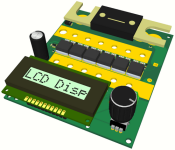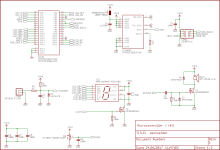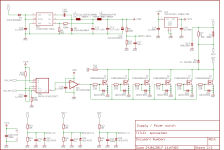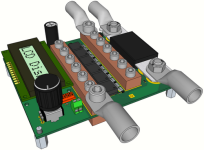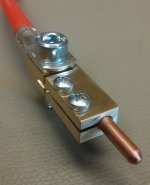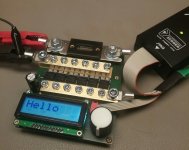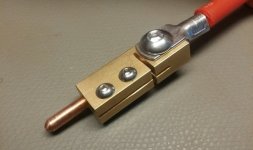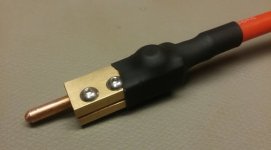Hi guys,
as part of my kicksurfer project (I was tired of my battery pack manufacturer of wanting >700€ each time I am asking him to prepare a few samples of packs from another cell type), I have started desigining a DIY spot welder.
After some googling, I realized that even when building it myself it would be quite costly, as the required power source needs to have very high specs. A suitable capacitor bank for example would be 100€+.
As I am using cheap race Lipos with 200A current rating for my RC car, I thought that they might be capable for welding as well. A first measurement then showed 1kA into a short!
I am still at the beginning, but I want to share my experience, and at the end make this open hardware that others can copy or build on.
The design thread is here, I hope it is not forbidden to link to a different forum but it is quite time consuming to keep multiple threads with the same subject.
http://www.eevblog.com/forum/projects/guesses-on-what-i-am-attempting-here/
Please let me know what you think, and I would be happy to hear if anyone would want to build one (after it is finished and stable).
xxxxxxxxxxxxxxxxxxxxx
Batteries that have been successfully used with kWeld
ODYSSEY Extreme PC925 12V Auto Battery, 28 lbs
https://endless-sphere.com/forums/viewtopic.php?f=14&t=89039&start=1125#p1556817
as part of my kicksurfer project (I was tired of my battery pack manufacturer of wanting >700€ each time I am asking him to prepare a few samples of packs from another cell type), I have started desigining a DIY spot welder.
After some googling, I realized that even when building it myself it would be quite costly, as the required power source needs to have very high specs. A suitable capacitor bank for example would be 100€+.
As I am using cheap race Lipos with 200A current rating for my RC car, I thought that they might be capable for welding as well. A first measurement then showed 1kA into a short!
I am still at the beginning, but I want to share my experience, and at the end make this open hardware that others can copy or build on.
The design thread is here, I hope it is not forbidden to link to a different forum but it is quite time consuming to keep multiple threads with the same subject.
http://www.eevblog.com/forum/projects/guesses-on-what-i-am-attempting-here/
Please let me know what you think, and I would be happy to hear if anyone would want to build one (after it is finished and stable).
xxxxxxxxxxxxxxxxxxxxx
Batteries that have been successfully used with kWeld
ODYSSEY Extreme PC925 12V Auto Battery, 28 lbs
https://endless-sphere.com/forums/viewtopic.php?f=14&t=89039&start=1125#p1556817


